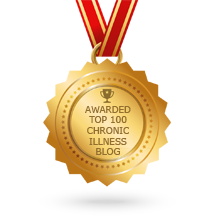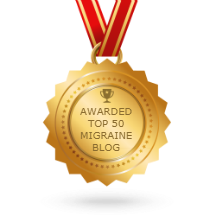Changing my Life with the Push of A Button: My Experience with Aimovig
In June of 2018, I took my first dose of Aimovig, one of the new CGRP medications. I livestreamed on facebook about taking my first dose, posted about how excited I was to try it and then haven't talked about it since. I've always been one of those unlucky people with medications where it either has terrible side effects or it works for a bit and then isn't effective anymore. I was excited to try Aimovig, but also completely terrified. What would happen if it didn't work? Even more terrifying, what would happen if it DID work?
The injection itself was one of the best autoinjectors that I've ever tried. I mean, I've tried the Sumavil Dosepro, the generic Imitrex shot with the autoinjector needle, and I regularly do DHE 45 injections. Suffice to say, I am no longer scared of needles because of my migraines, but I'm still a little wary of autoinjectors. To be honest, the buildup to my first dose was the worst part. I psyched myself out and had to facetime a friend (who's also an amazing patient advocate, you rock Sarah!) in order to calm myself down. I didn't have Ciara's "One-Two Step" playing like I did for my first DHE injection, but Sarah was expertly talking to me about how the anxiety before the shot is always the worst, and the best thing to do is just to do it and get it over with. So, after about 20 minutes of freaking out, the shot was over in 5 seconds. Minimal blood, almost no pain, I looked up and went, "wait.... that was it?" I couldn't believe that 1) I had just taken a dose of medication that could change my life and 2) it barely hurt and it was over so quickly.
It's now been 4 months on the 70 mg dose of Aimovig, and I'm living a fundamentally different life than I have for the past 6 years. I've seen a decrease of 4-5 major migraines each month, with a decrease in severity as well. My daily life is not as badly affected, in fact, I've had less brain fog and cognitive effects with my migraines after I started the Aimovig. This isn't to say that my migraines are gone completely, because trust me, I still get migraine brain a lot, but overall, I'm able to be a lot more functional than I was before. Furthermore, I'm able to be active again. I've written a lot over the years about my struggles with being able to exercise without triggering. Over the past 4 months, I've been able to slowly work up to doing spin classes, yoga for 80 minutes twice a week, and just generally be more active. I still get fatigued and have to ration my energy, but my threshold for activity is much higher.
I also stopped the Botox protocol when I started the Aimovig to see if it could balance out the withdrawal that I usually get around 10 weeks after the Botox injections. As a quick recap, the Botox protocol is a 31 injection migraine treatment that's injected into the head, neck, and shoulders. The Botox helped me for a while, but since I was starting the Aimovig, I proposed to my doctor that we use this past summer as a trial period and fully test it out. Much to my surprise, I didn't experience withdrawal from the Botox after starting the Aimovig, which was great!
I've been hesitant to write anything about my experience with Aimovig mostly because I was worried that publicizing my early success would somehow jinx how well that the Aimovig is working. I'm definitely lucky that I've been able to see such an improvement in my life, especially without any side effects! I take it every 28 days, and I've been able to set up delivery with a local pharmacy so it's convenient for me. I never thought that one shot a month would be able to make my life so different from what I had been used to. I still have migraine days, in fact, I had one yesterday, but those severe days are not happening as often, which means that I get to enjoy my life just a bit more.
Some people may be wondering why I'm so excited about a 4-5 day decrease in my migraines. What difference does it make? When you think about it, I usually spend over half of my month with a migraine, being a chronic sufferer means that I get 15+ migraines a month, usually around 18-20 days per month for me. Taking 4-5 days out from that of severe pain means that I'm looking at about 10-12 days, which is a huge difference.
Recently, Teva Pharmaceuticals and Eli Lilly released two other CGRP medications, Ajovy and Emgality, respectively. I'll do another post soon about the differences between these three drugs, but I do know that there are migraineurs who did not see changes on Aimovig who are going to give Ajovy and Emgality a chance.
I'm currently in my senior year of college and writing my thesis on the development of pain management as a medical specialty and the relationship between physician pain management organizations and U.S. pain legislation between 1970-2010. So, I do have a lot on my plate, but I'm looking forward to being able to see even more success with the Aimovig in the coming months.
Do you have questions about Aimovig, Ajovy, or Emgality? Let me know and I can answer them in my next post!







7 comments: